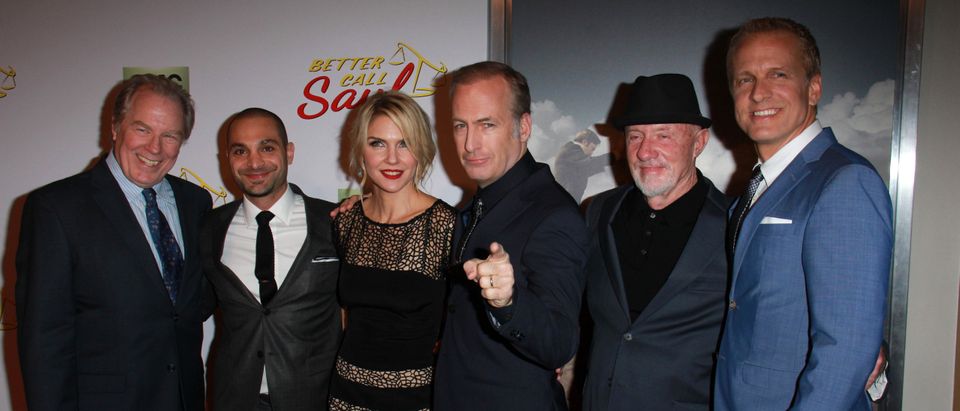“Better Call Saul” has concluded, bringing an end to the best television series of all time. If you haven’t watched the final episode yet, stop reading now. This review is going to be rife with spoilers.
There was only one of three ways “Better Call Saul” could have ended for Jimmy “Saul Goodman” McGill: death, freedom, or inside a federal corrections facility. Walter White (Bryan Cranston) caught his death at the conclusion of “Breaking Bad,” the show that introduced us to “Better Call Saul.” Jesse Pinkman (Aaron Paul) claimed his freedom once and for all in “El Camino.”
That left Saul, the most complex character crafted within the universe imagined by Vince Gilligan and Peter Gould, to end his journey in heartbreaking black and white behind the fence of ADX Montrose as Kim Wexler (Rhea Seehorn), the love of his life, walked away. In those last few moments, the lit cigarette, the words left unspoken in favor of fleeting glances, proved that despite the gangsters, the money, the scams, the courtrooms, the chaos and the characters around them, “Better Call Saul” was never a prequel at all. It was a love story.
Kim and Jimmy were a modern-day Romeo and Juliet meets Sid and Nancy. Kim kept Saul at bay, maintaining the best parts of Jimmy for as long as she could. Even in that courtroom, saying nothing, she managed to bring what little parts of Jimmy were left back into the light.
Saul really didn’t come to fruition until the events of the epic mid-season finale earlier this year, and like so much of the art of Gilligan and Gould, it went unsaid in everything but action. Had Howard Hamlin (Patrick Fabian) not hit the hardwood of Jimmy and Kim’s apartment, Kim never would have left, and we may never have met Saul Goodman.
In some ways, Hamlin ended up winning in his epic battle against Jimmy, because he took away the only thing that he ever loved. The more I think about it, the more Shakespearian the entire story becomes.
Full circle, What a Ending. #bettercallsaul pic.twitter.com/pWnMqihJCz
— Faris (@Far1s_H) August 16, 2022
But of course, there was so much more to “Better Call Saul” than the storylines of characters that made it the best television show of all time. It was arguably one of the most beautifully shot television series of all time. My personal favorite sequence is the one where Mike Ehrmantraut (Jonathan Banks) attempts to throw the shoes over the powerline. Again, with nothing said, it was a powerful moment that proved Mike was always the smartest man in the room.
A common criticism I hear of “Better Call Saul” is that it was too slow, too peaceful, sometimes going for minutes on end without a single word said. But isn’t that what makes it so perfect, so close to real life? Instant gratification isn’t real, so Gilligan and Gould didn’t include it in a show that didn’t need you to suspend your reality — it created its own.
Odenkirk hit the nail on the head in a video shared on Twitter today, “it’s too many moving parts and they fit together too perfectly.” And isn’t that just like real life?
Finale thank you from Bob Odenkirk pic.twitter.com/IFODl4bcLD
— Mr. Bob Odenkirk (@mrbobodenkirk) August 16, 2022
The conclusion of “Better Call Saul” offered almost full closure for every character that didn’t make it through to “Breaking Bad.” Even the shortest scene with Jimmy and his brother, Chuck McGill (Michael McKean), felt like the fuck-you Chuck always deserved to hear. Who’d have thought that, in the end, you’d side with Jimmy in that relationship?
The one character I’ll never really feel any closure for is Nacho Varga (Michael Mando). He deserved so much more from the cruel world he just couldn’t control. Just like losing a young man with real potential to a premature end, his death was unfair. It was too soon. It could have been avoided, but it was always going to happen. (RELATED: Here Are The Best Shows Renewed For 2022, The Canceled, And An Epic Throwback Rebrand)
It breaks my heart to think that we may never see these characters again. Only Kim, Jesse, and Skyler White (Anna Gunn) survived the Gilligan and Gould universe, so I guess there’s always hope, eh?


